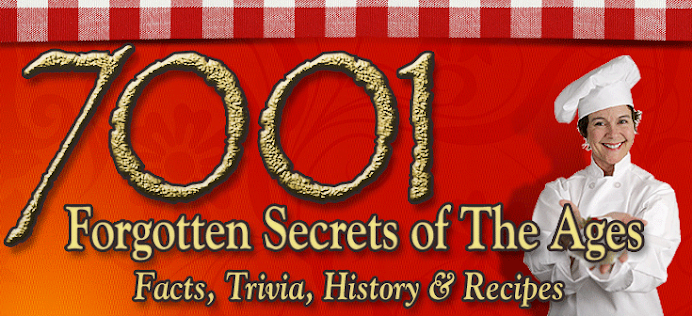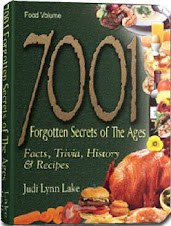 When purchasing a whole turkey
When purchasing a whole turkey, turkey parts, or any type of turkey product, it is important to read the label to ensure that you are selecting a product that fits your requirements. Whole turkeys sold in food stores are inspected by the USDA, so you can be sure that the turkeys are safe and of good quality. Look for the USDA stamp on the label.
The youngest turkeys have the most tender meat. Most commercially produced turkeys are young turkeys, so the meat is usually always tender if the turkey is rated Grade A and if it is cooked properly. The youngest turkeys that are available, usually less than 4 months old and under 8 pounds in weight, are labeled fryer/roasters and have the most tender meat of all.
The designation of the turkey being male (tom) or female (hen) may or may not be found on the label because it has nothing to do with the tenderness or overall quality of the bird. The main difference is that a tom turkey ready for market is larger than a hen.
Turkey processors and food stores use several different dating methods to ensure that the consumer receives a product that is fresh and safe to eat. The dating methods are described below.
Turkey Dating MethodsSell ByA whole turkey or turkey product that has the words, "sell by", followed by a date stamped on the package, indicates that the food store may display the product for sale until that date and the consumer should purchase the turkey or turkey product before the date expires. The turkey is still safe to use for another one or two days beyond the sell by date.
Best if Used By or Best if Used BeforeA product with the words, "best if used by" or "best if used before", followed by a date, indicates that the optimum flavor and quality can be enjoyed if the turkey is prepared before the date expires. The date does not indicate that product is unsafe to eat after the expiration date.
Use ByA whole turkey or turkey product with a "use by" date stamped on the package indicates the final date that the product should be used.
Note: If you decide to freeze a fresh turkey after purchasing it, the expiration dates are meaningless because the product is no longer perishable while it is frozen. The date stamped on the package can serve as an indication of the time period that the turkey was purchased so that it can be used within the recommended limits for freezing.
The label on fresh and frozen turkey will also show the nutritional information. The nutritional information will include the recommended serving size, calories, fat and cholesterol content, and a list of the nutrients including vitamins and minerals. As required by the USDA, the label will contain helpful information pertaining to food safety and proper handling. Cooking instructions are also included.
***
This recipe is perfect for those people who just are not sure how to tell when poultry is cooked thoroughly but not dried out. Give this a try.
BAKED STUFFED
Turkey 6-7 lb. 1 cup melted butter 1 cup stuffing 1 cup uncooked popcorn salt/pepper to taste Preheat oven to 350O. Brush turkey well with melted butter, salt and pepper. Fill cavity with stuffing and popcorn. Place in baking pan in the oven. Listen for popping sounds. When the turkey's backside blows out the oven door and flies across the room, the turkey is done.
__________________________________________________________________
Inspection And GradingThe USDA (United States Department of Agriculture) inspects turkeys for quality. The USDA seal can be found on the package, ensuring that the turkey has passed inspection and is suitable for human consumption. Most turkeys sold in food stores are des ignated "Grade A", meaning that they are of the highest quality. Grade A turkeys have no surface damage such as broken skin, tears, bruises, or cuts and all pinfeathers have been removed. There are no broken bones and the bird is plump and has a pleasing shape. Turkeys that do not receive a Grade A seal are still safe to eat, but their appearance and overall quality may be less than ideal. The other grades given to turkey, as well as other kinds of poultry are Grade B and Grade C.
Poultry is graded according to the following criteria:
• Conformation (proportion of meat to bone)
• Fat coverage
• Fleshing
• Absence of pinfeathers
• Absence of damage, including cuts, bruises, and broken bones
Look And FeelInspecting and feeling fresh turkey can provide information not found on the label. Look for indications that the whole turkey or turkey pieces have been stored at improper temperatures. Fresh turkey pieces can be squeezed or pressure can be applied to the package to feel for signs of freezing. Look for ice crystals forming on the bottom tray of the packaging or along the wings and edges of the pieces, which indicates that the turkey has been stored in temperatures that are too cold. Partial freezing is not harmful in terms of wholesomeness, but it will not extend the "sell by" date.
It is also important to be aware of whole turkeys or turkey pieces that are stacked too high in open refrigerator cases in a food store. The turkeys at the top of the pile will not be chilled to the proper temperature because they are above the proper storage level of the refrigerator case. This can result in the growth of bacteria especially if the temperature rises above 40°F, which will greatly decrease the time period that the turkey is safe to eat.
A similar problem occurs with frozen turkey that is stacked too high in an open freezer case in a food store. The turkeys on the top may be above the freezing line of the freezer case, which results in the turkeys being stored in temperatures that are inadequate for proper freezing. A frozen turkey should be rock hard and show no sign of freezer damage.
Quantity To BuyIf you are unsure of the quantity of turkey to purchase according to the number of guests you will be serving, it is always a good idea to allow for 1 pound of uncooked turkey per person when purchasing a whole turkey. This is a fairly accurate quantity per person, allowing for smaller appetites as well as extra helpings for larger appetites.
It is also important to keep in mind that a larger bird is a better value. Larger turkeys have more meat in relation to the amount of bone and cartilage. With that in mind, allow for up to 1 pound per serving when purchasing a turkey of less than 12 pounds and allow up to 3/4 pound per serving when purchasing a turkey weighing over 12 pounds.
© 2007 Judi Lynn Lake. All Rights Reserved Worldwide.
###
Order, 7001 Forgotten Secrets of the Ages Today on Amazon.com
Order in Time For The Holidays! 7001 Forgotten Secret's of the Ages is a marvelous potpourri of history, facts, secrets and trivia all about food. Beginning with the history of food, this is one book that will keep all trivia buffs and information seekers busy for years to come!
Loaded with information 'from soup to nuts', secrets known throughout the ages are rediscovered to preserve for generations to come. Here you will discover all cooking and baking secrets; unusual food facts you will use everyday to save yourself time, money and aggravation; current nutrition facts and health tips; how to make children interested in eating healthy
Plus important food safety information that restaurants and grocery stores are not telling you.
Also included are recipes for the most casual barbeque to the most formal dinner parties; theme party ideas, and even what was served in the Victorian days! Easy and fun to read format with an index,
7001 Forgotten Secret's of the Ages is a true treasure! It also makes a great gift for anyone on any occasion.
 It seems all we do today is run, and nothing will trim your kitchen hours like a few exciting recipes you can put together in just minutes with a crock-pot. Whether it is for last minute guests, to culminate a hectic day, or something quick before the PTA meeting, you will find a crock-pot to be your new best friend.
It seems all we do today is run, and nothing will trim your kitchen hours like a few exciting recipes you can put together in just minutes with a crock-pot. Whether it is for last minute guests, to culminate a hectic day, or something quick before the PTA meeting, you will find a crock-pot to be your new best friend. 
 1 Forgotten Secret's of the Ages is a marvelous potpourri of history, facts, secrets and trivia all about food. Beginning with the history of food, this is one book that will keep all trivia buffs and information seekers busy for years to come!
1 Forgotten Secret's of the Ages is a marvelous potpourri of history, facts, secrets and trivia all about food. Beginning with the history of food, this is one book that will keep all trivia buffs and information seekers busy for years to come!






 Stumble It!
Stumble It!

